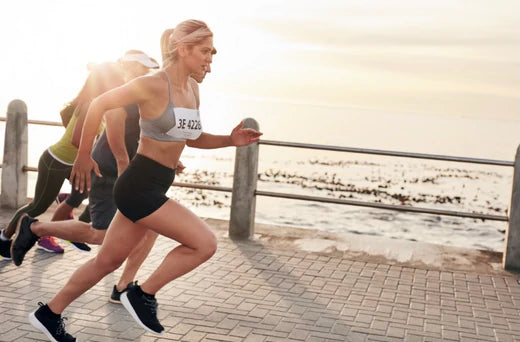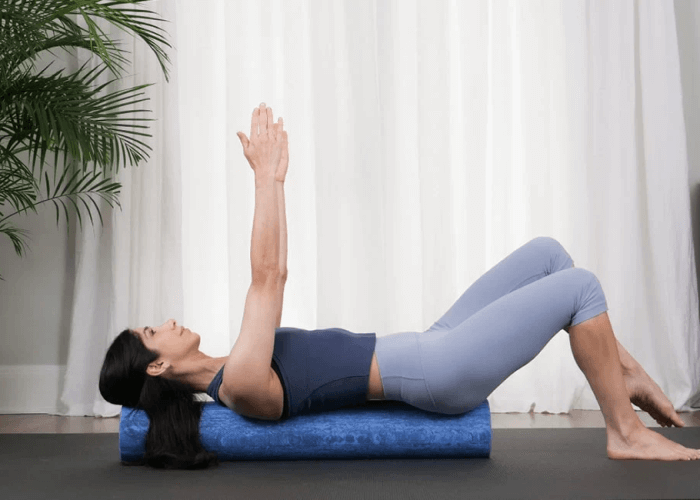How To Get Strong Hips

Strong hip muscles are something most take for granted until weakness makes daily life more obviously difficult.
It’s common to embark on a fitness journey to get lean or tone up — but getting strong hip muscles is all important for long-term wellness.
Having adequately strong hip muscles is vitally important to good posture, functional everyday movements (like walking and running, and getting up from a seated position), and maintaining stability for less wear and tear on our spines.
Strong hips directly contribute to good quality, pain-free living.
This article will review the benefits of strong hips and exercises for strong hips.
Signs of Weak Hips
The biggest contributors to weakness in the muscles surrounding the hip joints are being sedentary and avoiding physical activity, according to Very Well, research shows hip flexor weakness in particular could be a predictor for reduced functional capacity as you get older.
Here are some common signs of weak hips:
- Lower back pain
- Knee pain or instability
- Stiffness or tightness in hips after being stationary
- Limited range of motion, especially when kicking or jumping
The Benefits of Having Strong Hips
Why do we need strong hips? Let me count the ways!
Strengthening your hip muscles helps improve posture, maintain core stability, reverse the negative effects of prolonged sitting, decrease the likelihood of pain and injury, and boosts athletic performance.
Strong Hips Improve Posture & Core Stability
The iliopsoas muscles, also known as your main hip flexors, play a key role in helping you maintain good posture and core stability.
The iliopsoas is a key muscle in providing stability for your lower back, pelvis and hips — all of which are related to core health.
They each connect to the lumbar spine, travel through the pelvis, and attach to the inside of the femur near the hip joint. As a result, the iliopsoas are the only muscles that connect your upper and lower halves of the body, according to Athela Health.
Strengthening this key muscle helps you to freely sit, stand, walk, and move around with less pain.
The gluteal muscles of the hips - gluteus medius, gluteus minimus, gluteus maximus, and the tensor fasciae latae - all work to stabilize our pelvis, knees, and low back. Keeping these muscles in good condition helps us to avoid injuries that contribute to early aging.
Strong Hips Reverse the Effects of Sitting
As modern life continues to give us conveniences that undermine our bodies’ health, it’s important to consciously incorporate exercises into our fitness routines that specifically address strength in this area.
We are all aware of our excessive sitting situation, but consider things like not having to get up to change our television channels, having perfectly designed cabinets that eliminate deeper squatting and bending, always sitting on furniture instead of on our floors, and of course, this list could go on.
When you sit for long periods of time, your hip muscles become shortened, weak, and tight. As a result, they lose their full range of motion and supportive qualities.
Exercises for Strong Hips
As always, I love to focus on PREVENTION! Working hip muscles in different planes of movement regularly goes a long way to helping us continue to enjoy other kinds of movement with less chance of severe injury.
You can work the hip muscles in open chain or closed chain. An open chain is one in which movement of one joint is independent of the other joints in the chain, while a closed chain is one in which movement of one joint causes the other joints in the chain to move in a predictable manner, according to The National Strengthening & Conditioning Association.
Open chain is when your feet or knees are not connected to a fixed surface, as when you are performing all of your side lying work on the mat. Closed chain is when your feet or knees are grounded on a stable surface like the floor or on the Pilates or other equipment.
The two ways of working provide different benefits.
Open Chain Exercises for Strong Hips
Over the years, I have found that working the hip muscles in open chain is beneficial to include in a program for someone who is experiencing generalized low back pain.
When someone has back or even sciatic issues, it is commonly very difficult for that person to organize into good alignment when laying on their side. Just gaining the body awareness and ability to align well in this position does the body and brain a world of good.
This transfers to better unconscious standing alignment and core engagement during normal life movement. Working the hip muscles in this way also allows you to better isolate particular muscles without compression or pain in the knee or ankle joints.
Thinking of the core, I like the way working the hip in open chain works the muscles of the trunk. The core must work hard to stabilize as the leg moves. It’s not difficult to focus on the hip muscles working because once you get set up well, the burning calls your attention loud and clear. If you shift your awareness to your core, you will find LOTS of engagement, not burning, that is training your core to stabilize.
You need this stabilization for spinal and overall joint health as you move your legs around in daily life. If good-looking abs are your focus, then these exercises done consistently can give great results and are safer than those old school hundred crunches if you have back issues.
Closed Chain Exercises for Strong Hips
Closed chain work, where your distal end is fixed on a surface, is considered to be functional training because it's how we move in real life. When you perform closed chain movement and the distal end is fixed, it requires more engagement and coordination of other muscles and joints.
A squat and lunge are two examples of closed chain exercises that strengthen the hips.
Alignment is even more key in these types of exercises as any misalignments could cause pain in knees, ankles, or back. Initial strengthening in open chain, such as side lying legs in the Pilates mat work, is my preference before moving on to closed chain exercises.
I believe that BOTH ways of working are necessary, which is why you’ll see variety in my on demand pilates and barre class offerings.
The open chain way of working the leg muscles is all throughout the Pilates mat work, both the traditional and variations I weave in and really work the core while isolating specific muscles. My standing mat classes and barre workouts incorporate lots of closed chain leg and hip strengthening exercises.
I hope this inspires you to take a fresh look at your mat work if you’ve been doing it for a while or to appreciate the benefits of added standing work.
You can try out my classes in our on-demand library — by signing up for the 7-day free membership trial here.
Let's Stay In Touch!




